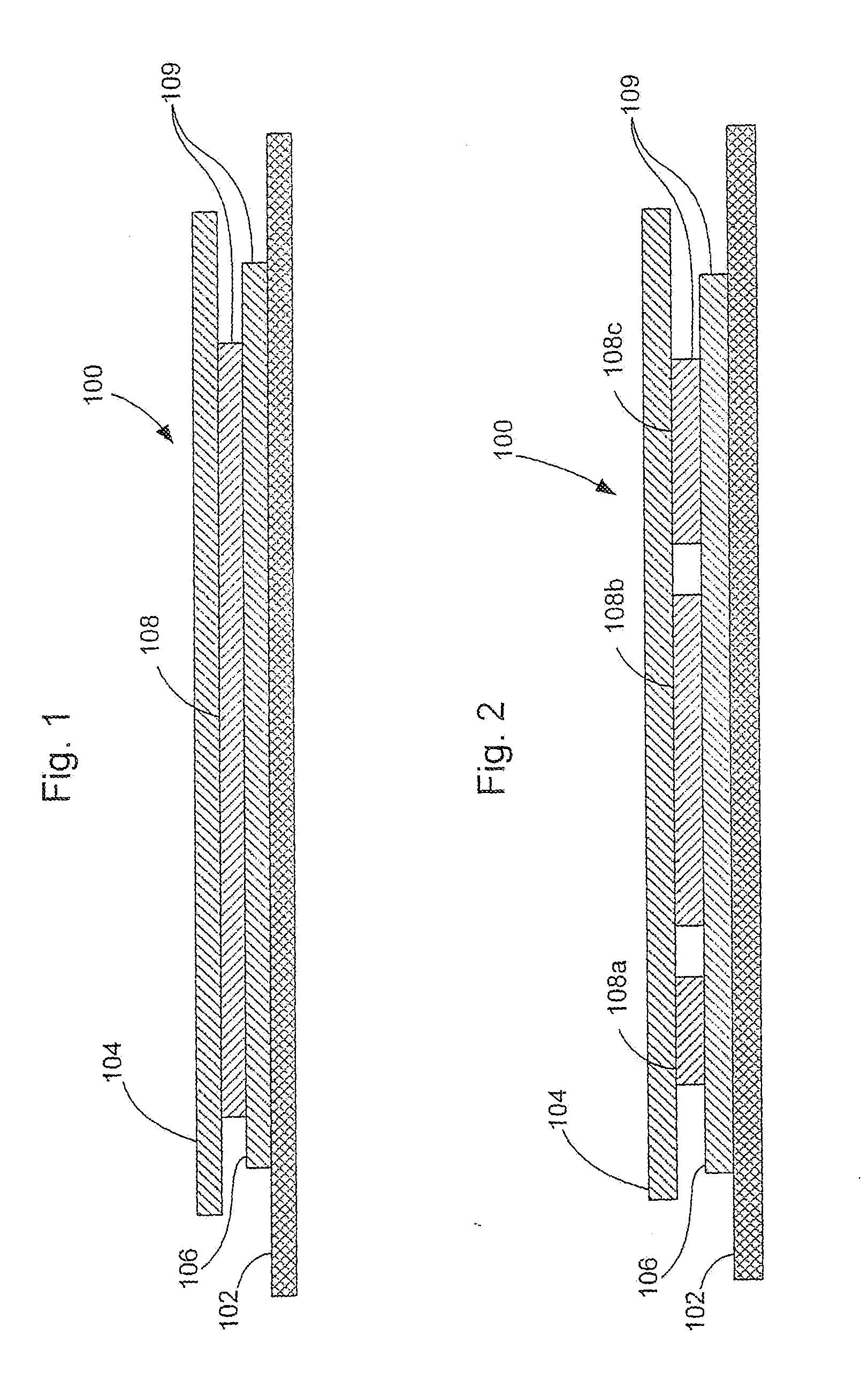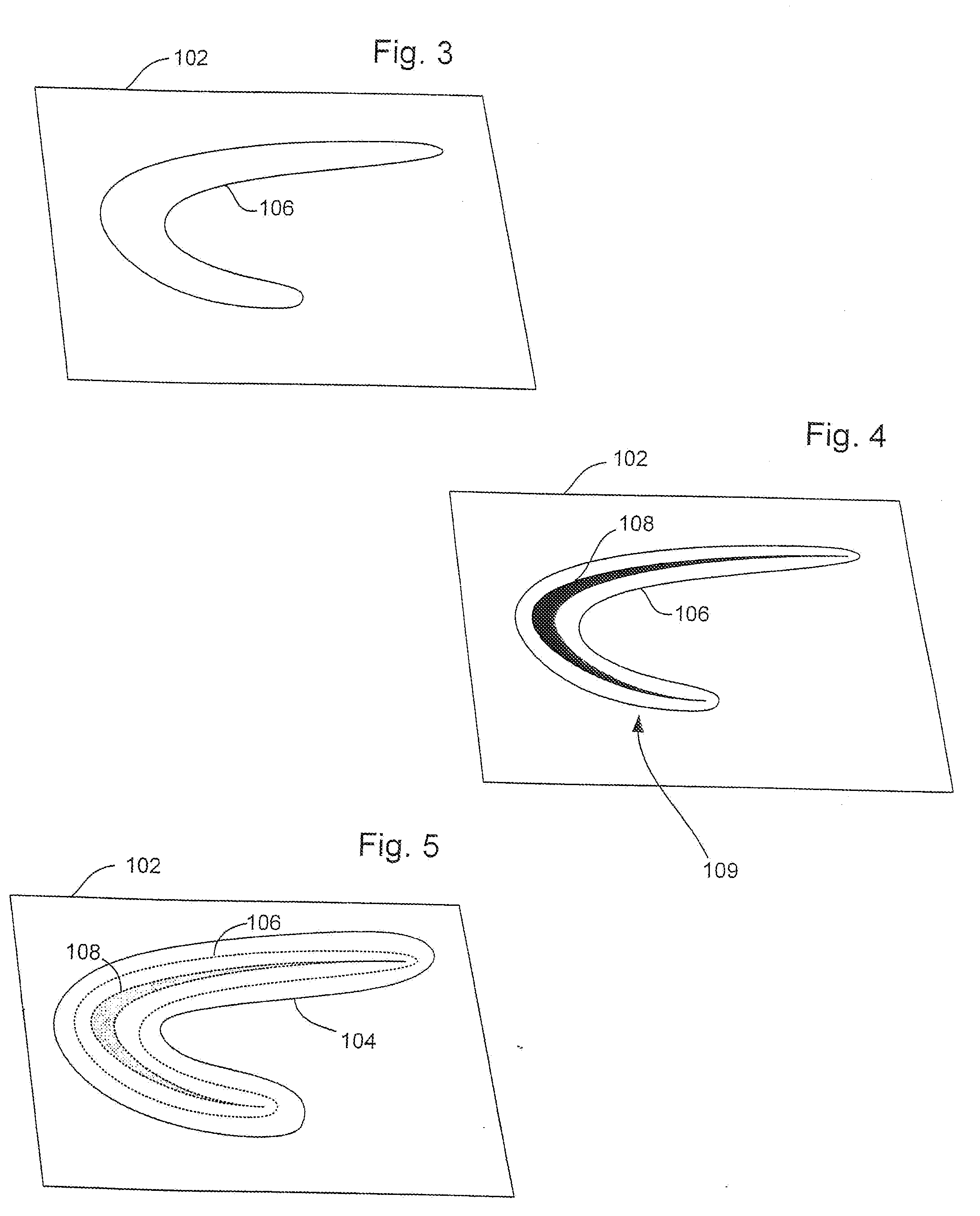Thermally Reactive Ink Transfer System
a technology of ink transfer and thermal reactive ink, which is applied in the direction of mechanical control devices, instruments, process and machine control, etc., can solve the problems of difficult application to highly curved, edged or contoured surfaces, and laborious airbrush designs that require considerable skill,
- Summary
- Abstract
- Description
- Claims
- Application Information
AI Technical Summary
Benefits of technology
Problems solved by technology
Method used
Image
Examples
Embodiment Construction
[0022]As required, a detailed embodiment of the present invention is disclosed herein; however, it is to be understood that the disclosed embodiment is merely exemplary of the invention, which may be embodied in various forms. Therefore, specific structural and functional details disclosed herein are not to be interpreted as limiting, but merely as a basis for the claims and as a representative basis for teaching one skilled in the art to variously employ the present invention in virtually any appropriately detailed structure.
[0023]An ink transfer system according to the present invention provides for the application of liquid, polyurethane based inks onto a backing sheet to form an ink transfer decal. The decal is coated with a removable transfer medium. The resultant decal is solidified, typically through evaporation of diluents after application of each layer of liquid constituent. It may then be removed from the backing sheet and applied to a final substrate.
[0024]Through the us...
PUM
| Property | Measurement | Unit |
|---|---|---|
| melting point | aaaaa | aaaaa |
| formulation | aaaaa | aaaaa |
| formulation | aaaaa | aaaaa |
Abstract
Description
Claims
Application Information
 Login to View More
Login to View More - R&D
- Intellectual Property
- Life Sciences
- Materials
- Tech Scout
- Unparalleled Data Quality
- Higher Quality Content
- 60% Fewer Hallucinations
Browse by: Latest US Patents, China's latest patents, Technical Efficacy Thesaurus, Application Domain, Technology Topic, Popular Technical Reports.
© 2025 PatSnap. All rights reserved.Legal|Privacy policy|Modern Slavery Act Transparency Statement|Sitemap|About US| Contact US: help@patsnap.com



